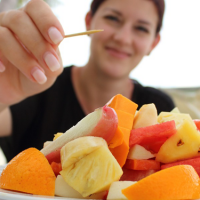Healthy Grocery Shopping: A Comprehensive Guide
Eating healthy starts with the choices we make at the grocery store. Ensuring that you stock your kitchen with nutritious ingredients is key to maintaining a balanced diet. Our guide will help you navigate your next shopping trip, providing practical tips and strategies to prioritize health, save time, and make the best choices for you and your family.
Why Healthy Grocery Shopping Matters
Healthy grocery shopping lays the foundation for a nutritious lifestyle. It ensures that you have access to high-quality ingredients, minimizes reliance on processed foods, and contributes to better overall well-being. By making informed decisions, we can support sustainable eating habits, manage weight effectively, and reduce the risk of chronic diseases.
Preparation Before You Shop Healthy Grocery Shopping
1. Plan Your Meals for the Week
A well-structured meal plan is the backbone of efficient and healthy grocery shopping. Write down meals for the week and list all the ingredients you need. This ensures you stay focused and avoid buying unnecessary items.
2. Create a Grocery List
Use your meal plan to compile a detailed grocery list. Organize the list by categories, such as produce, proteins, grains, and dairy. This not only saves time but also keeps you on track.
3. Don’t Shop Hungry
Shopping on an empty stomach can lead to impulse buys, often of unhealthy snacks. Eat a nutritious snack or meal before heading to the store.
Navigating the Grocery Store
4. Focus on the Perimeter
Most grocery stores place fresh produce, meats, dairy, and whole grains along the perimeter. These areas are rich in unprocessed, nutrient-dense foods. Spend most of your shopping time here.
5. Read Food Labels Carefully
When purchasing packaged items, check the nutritional information and ingredients list. Look for products with minimal added sugars, healthy fats, and no artificial preservatives.
6. Shop Seasonally and Locally
Opt for seasonal produce for maximum freshness and flavor. Local markets often have high-quality fruits, vegetables, and other products that are more sustainable.
Essential Food Categories to Prioritize
7. Fresh Fruits and Vegetables
Aim for a variety of colors to ensure a range of nutrients. Dark leafy greens, berries, citrus fruits, carrots, and cruciferous vegetables like broccoli are excellent choices.
8. Whole Grains
Choose whole grains like quinoa, brown rice, oats, and whole wheat bread. These are rich in fiber and provide long-lasting energy.
9. Lean Proteins
Stock up on lean meats, fish, eggs, tofu, and legumes. Opt for wild-caught fish and organic or free-range poultry when possible.
10. Healthy Fats
Include sources of healthy fats such as avocados, nuts, seeds, and olive oil. These are essential for heart health and overall wellness.
11. Dairy or Plant-Based Alternatives
If you consume dairy, look for low-fat or non-fat options. For plant-based diets, choose almond, soy, or oat milk fortified with calcium and vitamin D.
Healthy Grocery Shopping Tips
12. Buy in Bulk Wisely
Staples like rice, beans, and nuts are often more economical when purchased in bulk. Ensure proper storage to keep these items fresh.
13. Avoid Ultra-Processed Foods
Ultra-processed foods are often high in added sugars, sodium, and unhealthy fats. Stick to whole, minimally processed items for optimal health benefits.
14. Stay Budget-Friendly
Compare unit prices to find the best deals, and consider store brands, which are often more affordable but equally nutritious.
Healthy Grocery Shopping for Special Diets
15. Gluten-Free Options
If you’re gluten-sensitive, focus on naturally gluten-free grains like quinoa and rice. Check for gluten-free labels on packaged goods.
16. Plant-Based Diets
For vegetarians and vegans, stock up on protein-rich legumes, tofu, tempeh, and fortified plant-based milks.
17. Low-Sodium Diets
Reduce sodium intake by opting for fresh or frozen produce instead of canned options, and avoid processed meats.
Storage Tips to Reduce Waste
- Store produce properly: Use breathable bags for leafy greens and keep fruits like bananas and apples separate to prevent overripening.
- Freeze extras: Extend the life of perishable items by freezing them.
- Practice FIFO (First In, First Out): Use older items first to prevent spoilage.
Healthy Grocery Shopping Conclusion
Healthy grocery shopping is an essential step toward a nutritious lifestyle. By planning ahead, making informed choices, and focusing on whole, nutrient-dense foods, we can nourish ourselves and our families while contributing to sustainable eating practices. Start incorporating these tips today and transform your shopping habits for the better.










